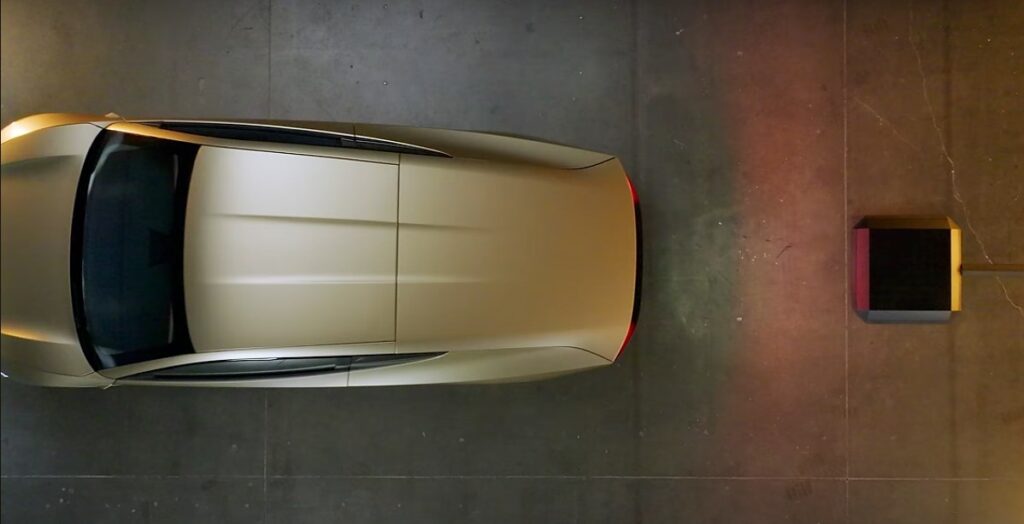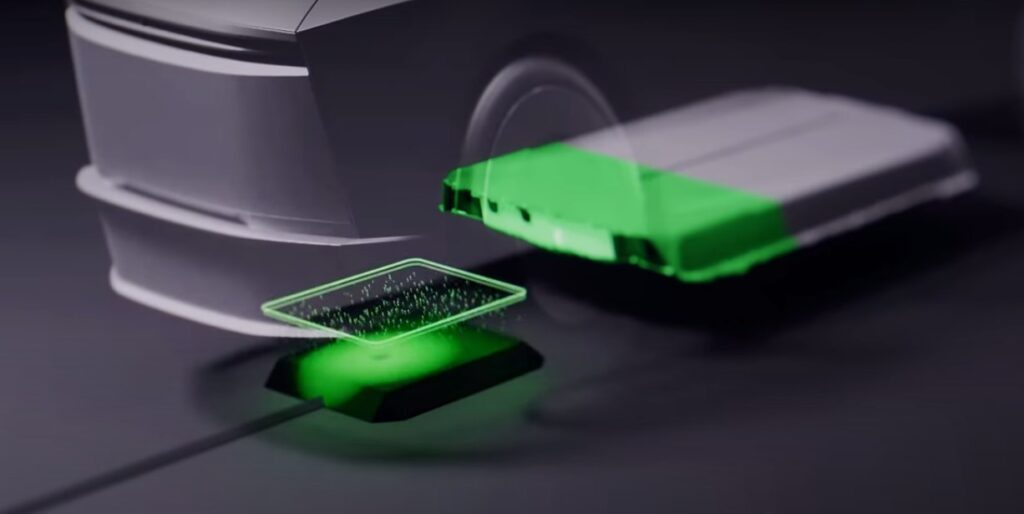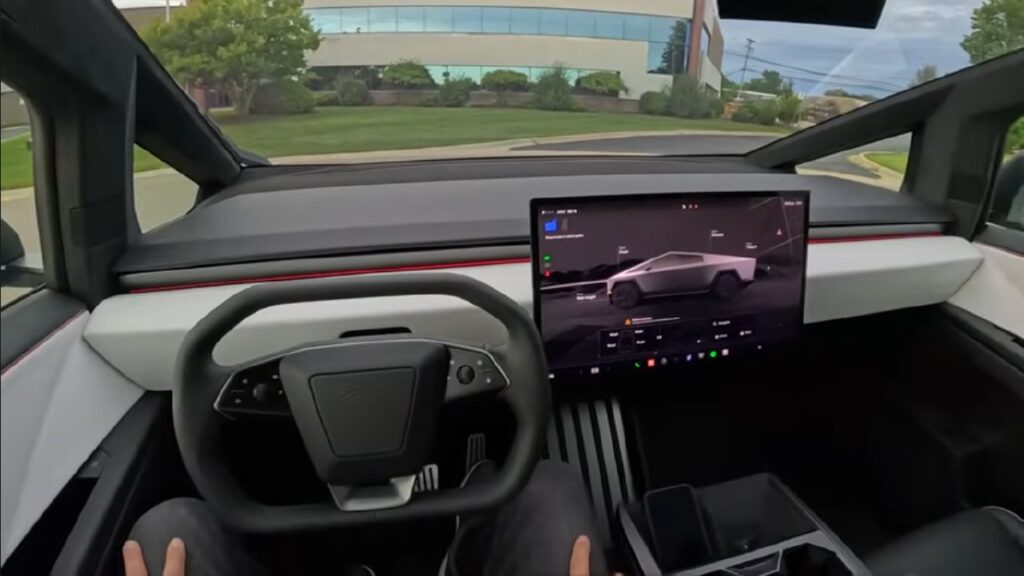
Warren Redlich discusses the exciting advancements in the Tesla Optimus and Tesla Cybercab event about Tesla’s wireless charging technology, particularly focusing on the Cybercab, a robotaxi set for release in 2026.
Table of Contents
Wireless Charging Overview
Tesla recently released a video showcasing their wireless charging capabilities upcoming cybercab. This innovative system allows the Tesla Cybercab to back onto a charger, and the charging screen provides essential information about the charging rate and battery status. For instance, during the demonstration,

Charging Rate and Battery Size Calculation
If the charge rate is 25 kW and it will take an hour to charge from that point, the vehicle will add approximately 25 kWh to the battery. Since this amount represents 65% of the total capacity, we can calculate the total battery size. If 25 kWh is 65%, that suggests a battery size of around 38 kWh.
However, there’s speculation that the charge rate could increase to 32 kW or even 36 kW, which would imply a larger battery capacity of approximately 49 kWh or 55 kWh, respectively. This aligns with Tesla’s previous announcements regarding the compact vehicle’s battery specifications.

Battery Efficiency and Range of Tesla Cybercab
Warren predicts that the Cybercab could achieve around 6 miles per kWh due to its aerodynamic design and lightweight structure. If the vehicle has a 53 kWh battery, it could potentially offer over 300 miles of range. However, if the capacity is closer to 40 kWh, the range would be around 240 miles, which is still sufficient for a typical robotaxi ride.

What is the Robo Taxi Concept
It’s crucial to understand that the Cybercab is designed as a robotaxi, not a personal vehicle. The typical rideshare trip will range from 5 to 20 miles, which means the vehicle’s range and charge time are optimized for urban environments. Passengers using a robotaxi won’t be concerned about the charging time as they would in a personal vehicle.

Cost-Effectiveness of Inductive Charging
Inductive charging presents a significant cost advantage over traditional supercharging stations. With less complex electronics required, the installation costs for these charging pads are expected to be significantly lower. This technology allows for easy deployment in various locations, making it a game-changer for the future of urban transportation.
Future Implications for Personal Vehicle Ownership
The emergence of robotaxis like the Cybercab may shift the paradigm of personal vehicle ownership. As the cost of Tesla vehicles rises due to their value as robotaxis, individuals may find it more economical to opt for ridesharing instead of owning a personal vehicle.
What are the Main Features of Tesla Cybercab?
- Fully Autonomous Design: The Cybercab is designed without traditional controls such as a steering wheel or pedals, allowing for a completely hands-off experience for passengers. This emphasizes its role as a robotaxi, where occupants can relax or work during their journey.
- Seating and Space: The vehicle accommodates only two passengers, maximizing interior space for comfort. The absence of a steering wheel enables a more flexible seating arrangement.
- Futuristic Exterior: The Cybercab features butterfly doors that open upwards, enhancing accessibility. Its design resembles a blend of the Cybertruck and Model 3, with a sleek, modern aesthetic.
- Inductive Charging: Instead of traditional charging ports, the Cybercab will utilize wireless inductive charging, allowing it to charge without physical connections. This method aims to simplify the charging process significantly.
- Advanced Navigation Technology: The Cybercab relies on artificial intelligence and camera systems for navigation, foregoing the use of Lidar technology. This approach is intended to reduce costs while improving the vehicle’s ability to navigate complex environments autonomously.
- Entertainment Features: Inside, the Cybercab includes a large 20.5-inch center display, enabling passengers to enjoy movies, games, and other entertainment options during their rides.
- Production Timeline and Cost: Production of the Cybercab is expected to begin in 2026, with a target price of under $30,000, making it an affordable option in the autonomous vehicle market
What are Tesla Cybercab prices?
Elon Musk unveils Tesla Cybercab robotaxi with butterfly doors and sub-$30,000 cost
What is the expected range of the Cybercab?
The Cybercab is projected to have a range between 240 to over 300 miles depending on the final battery size and efficiency.
Tesla Cybercab release date
The Cybercab is expected to be introduced around 2026.
How does inductive charging work?
Inductive charging uses electromagnetic fields to transfer energy between two coils: a transmitter and a receiver. This allows the vehicle to charge without the need for a physical connection.
What are the benefits of the Cybercab’s design?
The Cybercab’s design focuses on aerodynamics and weight reduction, enhancing its efficiency and range compared to traditional vehicles.
